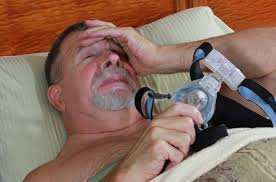
So, you’ve started using a CPAP machine, and everyone says it’s life-changing. And yes, it can be—better sleep, less snoring, more energy during the day. But here’s the thing: not all CPAP side effects get mentioned. Seriously, some of these little annoyances can sneak up on you and make you wonder if the machine is more trouble than it’s worth. Spoiler: most of them are fixable, you just need to know what to look for.
The Most Common CPAP Side Effects People Ignore
When most folks begin therapy, they notice immediate benefits, but some side effects are subtle. You might wake up with a dry mouth and think it’s normal. Or notice a red mark on your nose or cheeks and brush it off.
Some common, often overlooked CPAP side effects:
- Dry mouth or nasal passages: If your mask leaks or your humidity settings aren’t right, your airways get dry. You wake up parched or congested.
- Skin irritation or pressure marks: A mask that’s too tight or doesn’t fit properly can leave painful spots.
- Mask leaks and noise: Even a small leak can disturb sleep—yours and your partner’s.
Honestly, these might feel minor, but they can quickly make CPAP therapy annoying if not addressed.
The Side Effects You Don’t Hear About Often
Then there are side effects that aren’t immediately obvious:
- Claustrophobia or anxiety: Wearing a mask all night can feel weird, even for people who thought they’d be fine. Some users notice anxiety creeping in after a few nights.
- Sinus pressure or headaches: Too much pressure or an ill-fitting mask can leave you with a headache in the morning.
- Irritation from humidifier settings: Too much or too little humidity can create discomfort. Some people experiment for days before they find the sweet spot.
You’re not alone if this sounds familiar. Many CPAP users silently struggle with these issues.
Practical Ways to Reduce CPAP Side Effects
Luckily, there are things you can do:
- Adjust your mask properly. Straps should be snug, but not tight. If the mask is uncomfortable, try a different type—full-face, nasal, or nasal pillows.
- Use your humidifier wisely. Heated tubing helps prevent dryness, and finding the right humidity setting can make a huge difference.
- Check your pressure. Sometimes your pressure is too high or too low. Your sleep specialist can tweak it so therapy feels natural.
- Maintain hygiene. Clean your mask, tubing, and chamber regularly. Buildup of oils or bacteria can worsen irritation and cause leaks.
Even small adjustments often solve most side effects.
When It’s Time to Call Your Doctor
If you’re still waking up irritated, congested, or anxious despite adjusting everything, don’t ignore it. Your sleep specialist can:
- Suggest a mask swap or a CPAP alternative like BiPAP
- Recheck your pressure settings based on your sleep study
- Give tips to manage anxiety or claustrophobia
Remember: stopping therapy isn’t the solution. Almost every side effect can be managed.
Final Thoughts
CPAP side effects happen, yes. But the good news? Most are fixable. Monitor how your body reacts, clean your equipment regularly, adjust mask and pressure, and work with your doctor.
The payoff is worth it: better sleep, more energy, and long-term health benefits. Don’t let small annoyances stop you from getting the full benefit of your CPAP machine.
